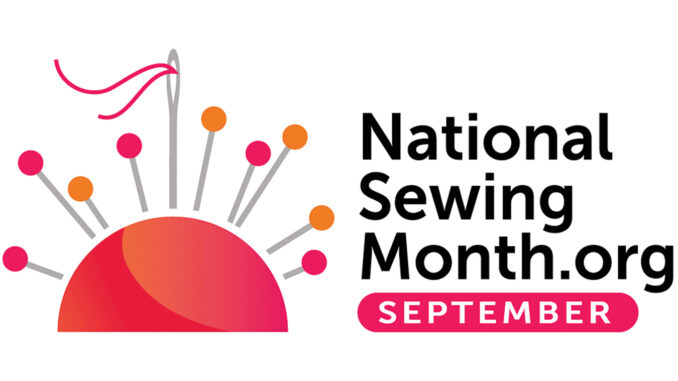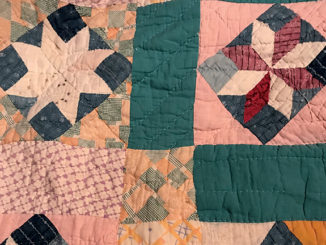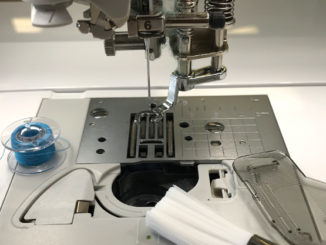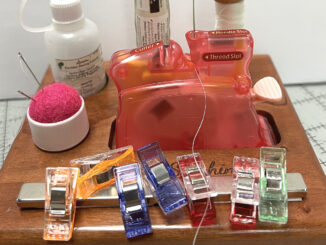
On September 21, 1982, President Ronald Reagan declared September as National Sewing Month (Proclamation #4976) “in recognition of the importance of home sewing to our nation.” Sewing skills have long been a part of our culture and have provided needed items for our lives as well as providing a relaxing, therapeutic activity for many of us.
At one time, most homes had a sewing machine, used mainly for clothing construction/mending and home decorations. Today, most sewers are quilters, crafters, and embroiderers. The machines of today range from basic machines with a few stitches to combination embroidery/sewing machines that can scan and stitch sophisticated designs. These are very different from the “Singer” treadle machine that our great-grandmothers used!
The theme for this year’s National Sewing Month is “Sew Sustainable.” For many who have been sewing for years, this has always been a part of why we sew. The Sew Sustainable theme encompasses many aspects of “earth friendly” techniques.
Mending is one area of “Sew Sustainable” that most of us with a machine practice. Many people who own a sewing machine use it primarily for mending small rips and tears to putting on the big patches over knees in pants/jeans and other stress areas. Why throw out a good garment when it can be fixed with just a few stitches to give it a longer life?
Reuse, Repurpose, and Refashion are also areas under the “Sew Sustainable” umbrella that sewers from past generations were very good at. Quilting, of course, reused the pieces from unwearable garments and refashioned those into warm and beautiful quilts for the bed. Some quilters still do this today, although many of our current man-made garment fabrics don’t work as well as the older cottons. Repurposing/refashioning items can unleash creativity. A top or dress can be changed by adding some trim, adjusting sleeve length and hemlines, changing buttons, etc. Dying a garment and adding trims can also create a completely different look.
Natural fibers are always a good choice for sewing projects. Cotton, wool, silk, and linen have been worn and used for centuries. Personally, I prefer both wearing and creating my sewing projects with natural fibers: my results are better with the natural fibers. Often, you can “shape” the natural fibers if you need to stretch a bit or “ease” something to fit; man-fibers resist manipulation as they want to maintain their shape. Natural fibers are also a bit more environmentally friendly than man-made and are renewable.
Donate can also be a good way to reuse your fabric stash and tools. If you have items that you will no longer use, look for organizations in your area that might take these. I fill a bag with the scraps from my projects and donate those to someone who makes charity quilts. I know the scraps are going to a good cause! Also, your local quilt guild can be a source for donations – they often have community projects going and will welcome additional materials.
As part of Sewing Sustainably, consider your equipment. Always choose the best you can afford: better tools and notions will last longer. A good pair of sewing shears can be resharpened (I am using the same pair I began sewing with many years ago!). Also, a good sewing machine should last you many years as well. Be sure to keep the bobbin area clean of lint and thread debris and have the machine serviced every one/two years, depending on how much you use it.
Sustainable sewing isn’t new – many of us already practice the points that are to be celebrated this month. Sewing is a great hobby that can be satisfying to both the soul and the environment!
-submitted by The Sewing & Vacuum Center





